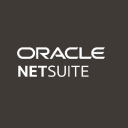We have all heard the phrase “cash is king.” It is the mantra most companies live by. It is also why purchasing an application to manage money is usually the first business software investment companies make.
As a starter system, QuickBooks is a logical and economical choice. At a high level, QuickBooks provides the basic functionality any business needs in a financial management system: enabling the management of a company’s chart of accounts, along with a systematic method of managing its relationships with vendors and customers through accounts payable and accounts receivable respectively. Providing this core functionality at a reasonable price point has made QuickBooks the system norm across many industries.
However, as innovation evolves faster than ever, heightened customer expectations and increased competition mean manufacturing companies can no longer rely on the business models or business management systems of the past. The reality is that times have changed. The internet has provided a platform upon which to build entirely new business models. Inefficiencies and wasted time on routine tasks, such as the monthly close, are no longer accepted. Business decisions are now driven by key performance data, not historical practices or best guesses. Real-time visibility and insight can now be the difference between thriving and barely surviving.

































































